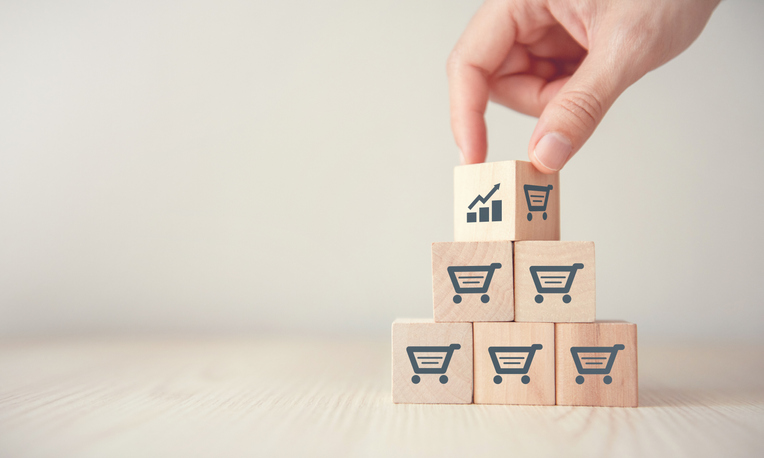Why Merchants Are Investing in Multichannel Selling (While Still Working With Amazon)
As the leading online marketplace, Amazon has become a must-have for most businesses, including small and midsize businesses (SMBs). However, the growth of ecommerce across multiple marketplaces and social media has many merchants asking themselves:
- Is the success of my business overly reliant on Amazon metrics like customer reviews and search rankings?
- Am I being forced to compete on price because of Amazon product comparisons?
- Am I missing out on exposure and sales by being in just one online marketplace?
What are the benefits of being in multiple online marketplaces?
To hedge the bet on Amazon, savvy SMBs are looking into multichannel selling in four key arenas:
- Other online marketplaces
- Their own branded ecommerce store
- Social Media
- Google Shopping
As the American — and world — economy has begun to recover while balancing concerns over public health, ecommerce keeps people feeling safe while also buying the products they love. Purchasing online has become much more normalized over the past year and a half, and as more Americans start to spend again, ecommerce is recovering twice as fast as brick and mortar.
So, if Amazon is the go-to option for those who buy online, why not double down?
According to a recent report by multichannel selling software Sellbrite, merchants listed on 3 or more marketplaces make an average of 156% more sales than merchants listed on only one.
4 Online marketplaces and how they differentiate from Amazon
The first step most merchants take into a multichannel selling strategy is to launch sales on additional marketplaces. Below are four of the top ecommerce marketplaces for sellers looking to supplement their Amazon channel:
- eBay — With its Fast & Free program, eBay competes directly with Amazon. Merchants love that eBay doesn’t compete with sellers the way Amazon does by showing side-by-side comparisons with their own Amazon brand items. However, eBay does not have an in-house fulfillment option like Amazon’s Fulfillment By Amazon program: you must provide your own fulfillment solution.
- Walmart Marketplace — The hallmark bargain store has moved into the digital age with a distinct advantage: it’s existing brick and mortar ground cover. With its own loyal customer base, Walmart is now offering a ‘Buy Online Pick Up In Store’ option along with direct-to-doorstep.
- Newegg — Originally a marketplace for tech aficionados, Newegg is still a go-to online marketplace for the tech-savvy, but has recently expanded its product offerings. Their Premiere loyalty program also gives merchants more time for deliver, with a 3-day standard as opposed to Amazon’s 2-day.
- Overstock — Similar to NewEgg, Overstock was founded with a niche market in mind: homemakers on a budget. However, they too have recently expanded their product offerings.
Making the most of a branded ecommerce store
A Ware2Go survey in September 2020 revealed a trend in ecommerce: 35% of surveyed merchants opened an online store for the first time.
The benefits of using an ecommerce plug-in like Shopify, BigCommerce, or WooCommerce include::
- Eluding competitors by driving traffic to your site with SEO and digital marketing
- Re-targeting customers with digital ads
- Creating opportunities for new and return business via email marketing
- Maintaining full brand control
How YBell Fitness pivoted from B2B to D2C with ecommerce
From their founding YBell Fitness, a seller of gym equipment, positioned themselves as a large volume business that sold to gyms and fitness centers. However, mandatory gym shut-downs in 2020 threatened to slow their go-to-market strategy to a near halt. The solution? Selling directly to customers.
With a new online store, YBell found a new online sales channel, driving traffic directly to their site. With a user-friendly ecommerce platform and a fast, reliable ecommerce fulfillment solution, YBell was able to pivot effectively while also having peace of mind over the logistical shifts needed to meet customer expectations, like 2-day shipping.
‘Passive Purchasing’ opportunities on Social Media & Google Search
The old adage goes that ‘no one likes to be sold to, but everyone likes to buy’. This idea has led to another growing trend: passive purchasing. This strategy is built around removing friction from the buying process by integrating into social media and search, often reducing the number of clicks it takes to ‘buy now’.
What does passive purchasing look like?
The two sales channels for passive purchasing are social media and Google search a la Google Shopping.
While social media platforms like Facebook and Twitter have long offered targeted ads and promoted posts, these have become more actionable over time with call-to-action buttons. Likewise on Instagram stories, followers can simply ‘swipe up’ to buy.
The more recent tactic of product placement with social media influencers is also evolving. In the past, influencers would simply include a product mention or tag a company’s social media account. This required followers to take an additional action, but now buying is becoming more streamlined with YouTube’s new shopping features that allow for tagging products in-video for purchase opportunities.
Meanwhile, shoppers often ‘Google it’ as a first step on their journey to making a purchasing decision. Similar to previewing images and videos that may apply to searches, Google Shopping provides a preview where customers can go straight to buying from their Google search. While digital marketing tactics like SEO remain important for SMBs that want to be at the top of the modern-day phonebook, Google Shopping has introduced ‘Smart Shopping’ campaigns based on a PPC model, similar to Google AdWords.
Multichannel selling software can create ROI for SMBs
Multichannel selling has been proven to increase sales for SMBs, but what happens when those channels are siloed? Without unifying sales channels, SMBs could see inventory shortage or shipping delays, and not be able to spot them until it is too late. Disjointed online sales channels also lead to manual aggregation, which takes a lot of time and effort while increasing the potential for human error.
To make the most of multichannel selling — and their margins — SMBs are looking to technology to simplify ecommerce and fulfillment across all ecommerce channels.
Multichannel selling software:
- Builds effective COM (Commerce Operations Management)
- Consolidates all metrics into a single dashboard
- Improves strategic, data-driven decision making
- Helps launch new channels and products quickly
- Syncs sales channels with fulfillment operations
Ware2Go has all-in-one solutions that help SMBs ensure they get the most ROI from multichannel selling and deliver on their promises to customers. To learn more about how Ware2Go is working with SMBs to meet the current demands of ecommerce and fulfillment, reach out to a specialist today.

